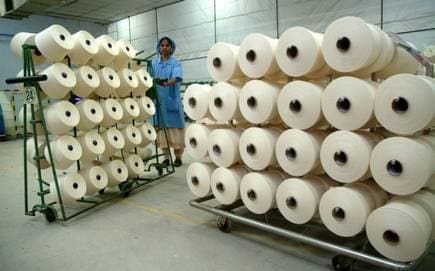Cotton, which contributes over half of the raw material in India’s textile sector, has seen a declining trend in its price with pressures from competitive international cotton prices owing to higher production in some nations, according to the July 2019 edition of the credit news digest on India’s textile sector published by India Ratings and Research (Ind-Ra). However, the reduction in prices has not been commensurate with the spreads with international cotton. With muted demand for yarn from China and Pakistan enjoying duty-free exports to China, Indian yarn manufacturers are suffering with idle capacities and production losses, the report said. With the negative spreads, the agency now expects a continued trend of increased imports for the cotton season 2018-19. For the current sowing season, cotton productivity has been estimated to be the lowest in the decade at 420.72 kg per hectare, owing to low acreage and low sowing interest by the farmers over other crops.
While yarn manufacturers are facing headwinds on the exports front, the poor off-take of yarn from the domestic fabric industry will ensure that the current sub-normal capacity utilisation levels continue. The agency expects yarn production to fall 5-8 percent year-on-year (YoY) in fiscal 2019-20 owing to lower demand from China and volatility in cotton prices. Synthetic or manmade fibre (MMF) has seen a stabilisation in the prices with support from almost stable crude prices in the second quarter of this fiscal. Further, the improving spread with cotton has made MMF more lucrative sub-sector for textile market.
Readymade garment exports have started improving with end of the first quarter for 2019-20 and the beginning of the second quarter recording higher exports. With the introduction of incentives in the form of Rebate of State & Central Taxes and Levies scheme, along with the existing Merchandise Exports from India Scheme, for made-ups and garments, exports are benefitting up to 5 per cent.
These incentives aim to help India cope with Vietnam and Bangladesh that have improved their market share in the global textile industry in select sub-segments, says the report. Capital expenditure in textiles has been majorly to replace machines with new technologies and shift to premium/ niche products in the existing line-up. Projects outstanding have outpaced the completion of projects, owing to muted demand, volatility in cotton prices and US-China trade war, the report adds.

